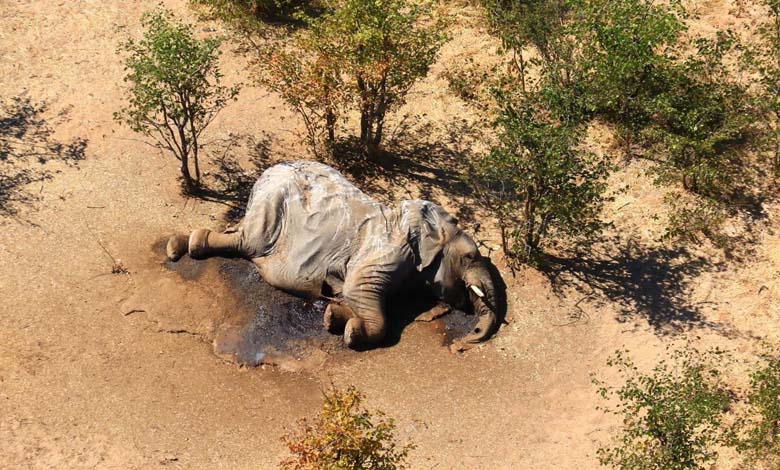Drought kills dozens of elephants in Zimbabwe

Dozens of elephants have died of thirst in the famous Hwange National Park in Zimbabwe, and environmental conservationists fear more losses due to the drought resulting from climate change and the global phenomenon of “El Niño.”
Scientists say that the “El Niño” phenomenon, which makes the weather hotter and drier throughout the year and is exacerbated by climate change, is a concern in the ongoing discussions at the United Nations Climate Change Conference in Dubai.
An official from the Zimbabwe Parks and Wildlife Management Authority (Zimparks) stated that there is no major river in Hwange National Park, and the animals depend on solar-powered boreholes.
Davison Madlamoto, Chief Environmental Scientist at Zimparks, told Reuters, “We rely on artificial water due to the decline in surface water, and as elephants rely on water, we are recording more cases of deaths.”
The number of elephants in Hwange is 45,000, and a fully grown elephant needs 200 liters of water daily. However, with a shortage of water sources, the solar-powered pumps in 104 boreholes cannot draw enough water.
Reuters observed dozens of elephant carcasses near the boreholes, and park officials said that other elephants had died in the bush, providing an easy prey for predators and scavenging birds.
Madlamoto mentioned, “The park is suffering from the repercussions of climate change, and rainfall has become scarce.”
According to the Zimbabwe Meteorological Services, the rainy season extends from November to March, but rain has been rare so far this year, and drought is expected to persist until 2024.
Zimparks stated that the animals have been forced to travel long distances in search of water and food, and several herds of elephants have crossed the borders into the neighboring country of Botswana.
It noted that the elephant population in Zimbabwe is around 100,000, but the carrying capacity accommodates just a little over half of this number, meaning that national parks are overcrowded.












